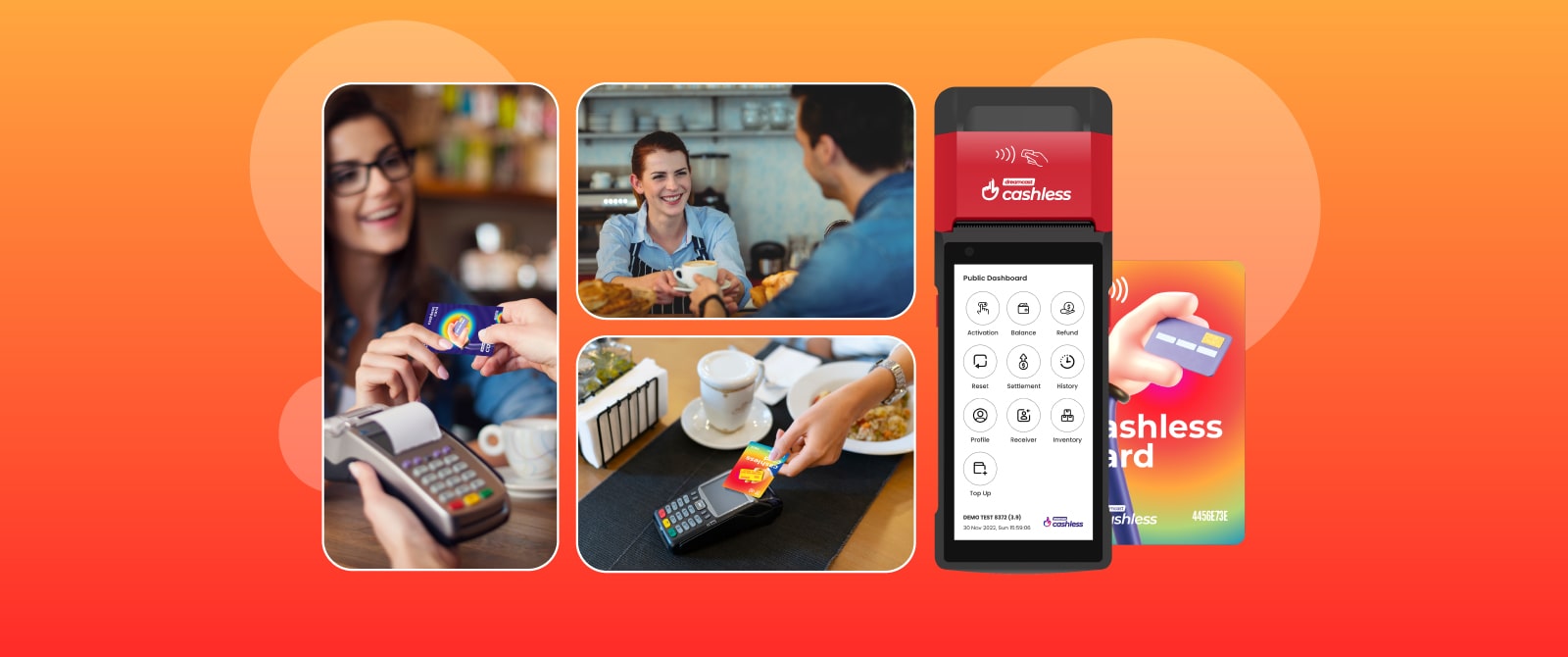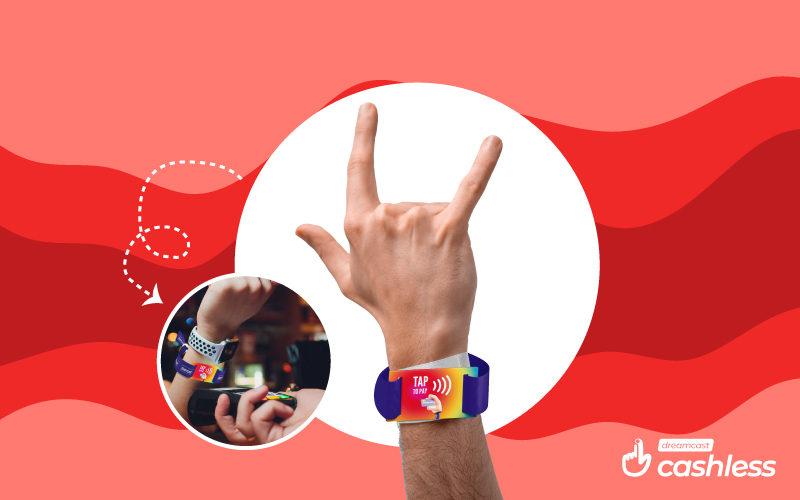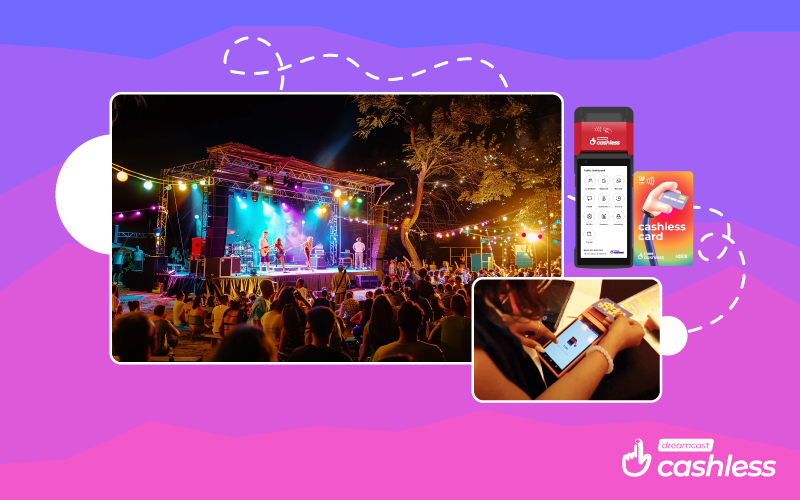In the food court setting, the efficient and convenient way to manage transactions is the food court payment system. This payment system is becoming famous in different industries such as the food service sector. If you are a customer or a food count owner, a trusted and reliable cashless payment system can be an ideal choice for you. It has a wide range of benefits that we will discuss in this blog.
Importance of Cashless Payment System for Food Court

Boost Transaction Value
Compared to the traditional payment system, the food court cashless payment system can help to boost transactions. The users can do limited transactions when they use physical cash. On the other hand, the food court cashless payment system offers the flexibility to pay the bill using a mobile wallet, debit or credit cards, or an online payment platform As a result, customers are more likely to upgrade their order and spend more. This process helps to boost sales and increase the ROI for the food court business.
Streamline The Payment Process And Boost Speed

The convenience that the cashless payment system offers to the customer is one of the main benefits. With this system, customers can easily use mobile payment apps or swipe cards. It makes hassle-free and quick transactions. Most food court owners are using this payment system because it helps to decrease the waiting time. By reducing the waiting time, the food court can serve more customers in less time.
Additionally, food court owners can improve the customer experience and encourage repeat visits by offering a seamless payment experience.
Enhance Efficiency of Operation
The operational efficiency of food courts also matters for ROI. To boost operational efficiency and save more time, most food courts and restaurants are using cashless payment systems. These systems reduce the requirement of manual cash handling and counting by automating the payment process. This helps employees to focus on other tasks such as maintaining cleanliness, customer service, and food preparation. Food courts can increase profits, decrease human errors, and boost productivity by streamlining the operational processes.
Improve Security
Compared to the traditional payment system, the cashless payment system offers more security and privacy. With the physical cash, there is always a risk of theft or loss. On the other hand, digital payments leave an electronic trail that offers a higher level of accountability and reduces the possibility of theft.
Additionally, the food court cashless payment system includes different technologies such as encryption and tokenization to protect the customers’ data and information. These technologies help both businesses and customers from potential fraud and unauthorized access. Food businesses can create a safer environment and build customer trust.

Data Insights and Analytics
In order to improve the business and make informed decisions, customer data and analytics play an essential role. The main question is how to get this information and data. Cashless payment system is the solution for this. A reliable and trusted cashless payment system offers data insights and analytics features that help business owners understand their strengths and weakness. These systems offer details reports on customer behaviors, peak hours, transaction volume, most popular items, and more.
Owners can change their marketing strategies, manage staffing levels, understand new trends optimize their menu offerings, and more. In the end, by optimizing operational efficiency and catering to customer preferences, the food court owner can boost profitability.
Customer Invaction and Loyalty Programs
Using a cashless payment system presents food courts with interesting chances to improve consumer involvement and build loyalty using loyalty programs. Food courts can provide incentives to consumers such as discounts, rewards, or tailored offers by deftly tying loyalty programs with cashless purchases. These appealing advantages inspire guests to return often and foster gratitude.
Imagine this: You go to your preferred food court, pay cashless, and get loyalty points good for a complimentary drink or a unique menu item on your next visit. The experience is much more enticing because of the ease with which one may earn and redeem incentives on a digital platform. Every purchase gives consumers value and a link to the food court, therefore enhancing their loyalty and raising the possibility of further visits.
Food courts may learn a great deal about consumer preferences, order history, and spending habits by using loyalty programs and cashless payment systems. Customized marketing campaigns and focused promotions made possible by this data help to increase client involvement even further. Customized offerings or special discounts to devoted consumers not only make them feel valued but also encourage them to prefer the food court above competitors. For the food court, more consumer involvement and loyalty finally translate into more sales and profitability.
Expanded Customer Base
Food court businesses cannot survive without catering to a varied clientele. By allowing different payment preferences—including those who want digital transactions or do not carry cash—cashless payment systems significantly help to grow the consumer base.
Think about the tech-savvy people who are continuously searching for advanced and easy payment options. Food courts draw this kind of client who values the flawless experience provided by digital transactions by using cashless solutions. Likewise, visitors to the food court might find it more handy to utilize their foreign credit cards or mobile payment applications rather than handling local money. Food courts become more accessible to these guests who accept cashless payments, therefore optimizing their chances of drawing and serving a larger clientele.
Furthermore, the younger generation—which is quite at ease with modern technologies—trends toward cashless payments. Food courts attract this group by providing these choices and projecting themselves as contemporary, forward-looking businesses. Being able to accommodate several payment options makes the environment friendly and motivates more people to pick the food court as their preferred dining place. For the food court, foot traffic and possible income grow along with the clientele.
Final Words:
Through increased profitability and better general business operations, cashless payment solutions might transform the food court sector. Cashless solutions are a great investment for the food court business because of their convenience, speed, higher transaction values, greater efficiency, security, access to vital data, and simplicity. In a world going more and more digital, food courts can keep ahead of the competition, offer a better customer experience, and boost income sources by embracing this technology. Using a cashless payment system calls for careful thought and the choosing of a trustworthy technology supplier. Food court business should evaluate their particular requirements, financial situation, and degree of integration capacity to select the most fit option. Food courts may make a win-win scenario for their consumers as well as their financial lines by properly using cashless payment technologies.
FAQs
A cashless payment system refers to a method of making transactions without using physical cash. It utilizes digital payment methods such as credit or debit cards, mobile wallets, QR codes, or contactless payments to complete transactions.
Integrating a cashless payment system in a food court can have several benefits that contribute to increased profits:
Faster transactions: Cashless payments are typically quicker than handling cash, reducing waiting times and allowing for more orders to be processed.
Increased customer convenience: Many customers prefer the convenience of paying with their mobile devices or cards, leading to higher customer satisfaction and repeat business.
Improved order accuracy: Cashless systems often integrate with digital ordering platforms, reducing the chances of manual errors and ensuring accurate order processing.
Reduced cash handling costs: Managing cash involves additional expenses such as cash counting, security, and potential losses due to theft or human error. Cashless systems eliminate or minimize these costs.
Enhanced upselling opportunities: Digital payment platforms can be integrated with loyalty programs or personalized offers, enabling targeted upselling and cross-selling to increase average order value.
Cashless payment systems have become increasingly common and are widely trusted by customers. With the advancements in technology and security measures, digital payments have proven to be secure and reliable, earning the trust of consumers.
Yes, implementing a cashless payment system can be an attractive feature for customers. Many people prefer the convenience and speed of digital payments, and offering this option can make your food court more appealing compared to competitors that only accept cash.






